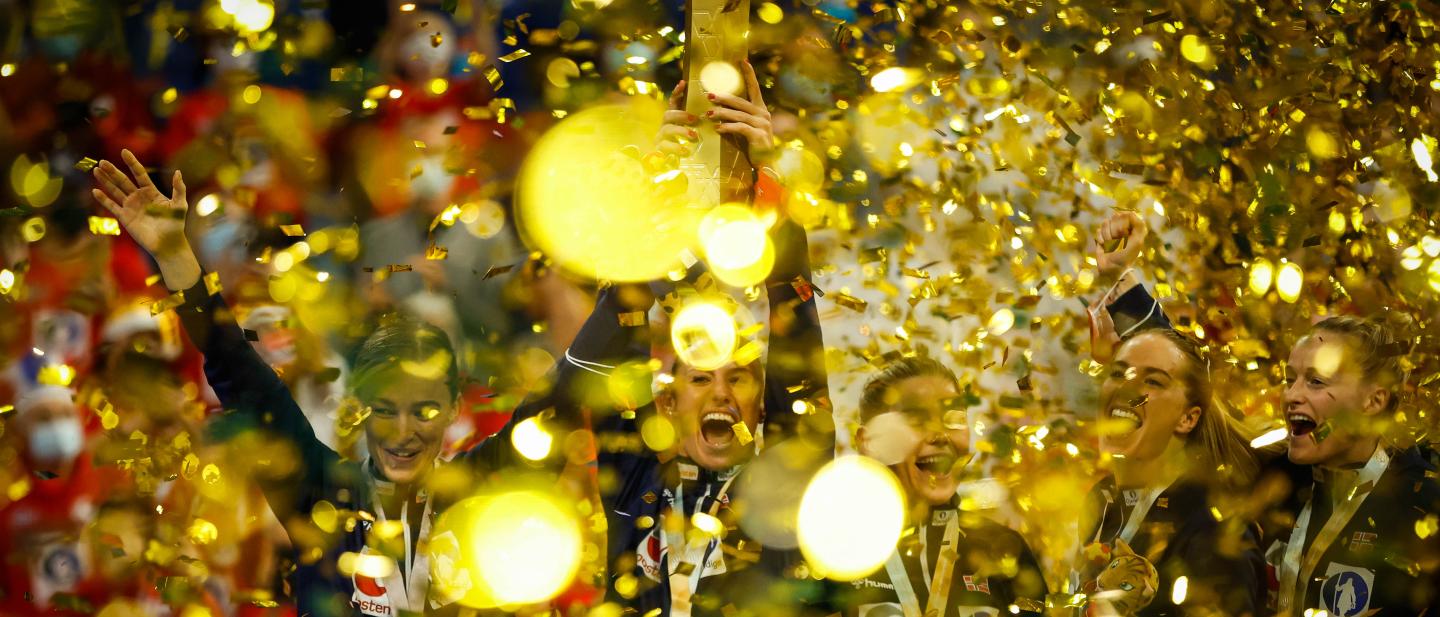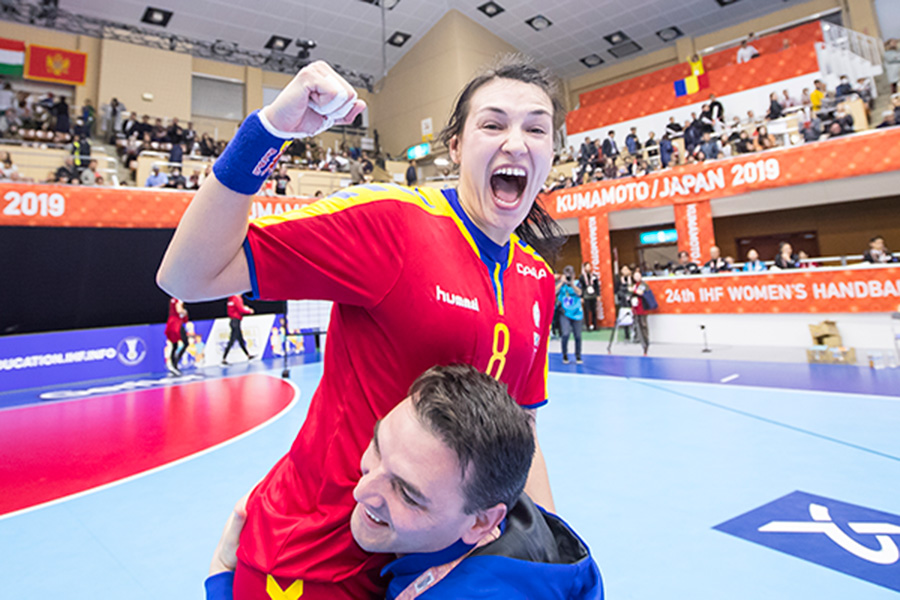Five reasons to watch the 2023 IHF Women's World Championship
24 Nov. 2023

The 26th IHF Women’s World Championship is just around the corner, with only five days separating us from the throw off, which is due to take place simultaneously in Frederikshavn and Stavanger. This will be the first-ever edition to be co-hosted by three countries, while also being the second edition with a 32-team line-up, an excellent representation, with teams from five continents at the start.
But what can we expect from this competition? Why is it a must-watch? We are going through the main talking points to underline why Denmark/Norway/Sweden 2023 will be an unmissable edition of the IHF Women’s World Championship, one of the most-balanced and most exciting ever.
Handball is coming home
11 months ago, in Stockholm, the Tele2 Arena hosted two quarter-finals, one semi-final, two placement matches, the bronze-medal match and the big final of the 2023 IHF Men’s World Championship. Over 20,000 fans were present in the arena during the last two matches of the competition, when Spain won the bronze medal and Denmark completed an unprecedented three-peat, delivering an extraordinary atmosphere in the venue.
Scandinavia is a hotbed for handball and the first-ever edition of the IHF Women’s World Championship to be co-hosted by three countries will see six superb venues offering an excellent environment for all the players to thrive. From the Jyske Bank Boxen in Herning, which will host the final after an eight-year hiatus to the Arena Nord in Frederikshavn, Denmark will see once again crowds flocking to the arenas to see high-quality handball.
Sweden will host the IHF Women’s World Championship for the first time in history and the 12,000-seater Scandinavium in Gothenburg and the 5,500-seater Helsingborg Arena are also ready to create memories, 11 months after the first arena was also the host for Sweden at the 2023 IHF Men’s World Championship.
Last, but not least, Norway will also host matches in the preliminary round, main round and two quarter-finals in Stavanger and Trondheim, with the Scandinavian country embarking in co-hosting back-to-back editions of the World Championship, first this one and then the 2025 IHF Men’s World Championship.
Big reasons to fight until the end
The IHF Women’s World Championship is clearly a huge objective for the best teams in the world, making it a competition targeted by the best of the best, with surprises rarely springing up, like Brazil winning the title in 2013, when they delivered one of the biggest shocks in the history of handball.
This time around, though, the competition has an extra motivation, as it will be a qualifying event for the Paris 2024 Olympic Games. Five teams are already qualified – Norway, hosts France, the Republic of Korea, Angola and Brazil – with seven spots still open. If none of the qualified countries win the title, then the winners will also make it to the Paris 2024 Olympic Games, celebrating a win twice.
Moreover, the next six teams, from the second to the seventh place, will earn a ticket to the Olympic Qualification Tournaments, which are due to take place in April 2024. If some of the sides which are already qualified will finish between these places, then the sides finishing on the next places are eligible to progress to the Olympic Qualification Tournaments.

The last dance for Neagu and Oftedal?
Denmark/Norway/Sweden 2023 might be the swan song at the IHF Women’s World Championship for two of the biggest stars of the last two decades in handball. This will be the seventh edition of the world handball flagship competition where Cristina Neagu will feature, 16 years after making her debut at France 2007, as a teenager brimming with potential. Injuries have derailed Neagu’s challenge for a record in the competition, but in the previous six appearances, she has scored 247 goals.
The top goal scorer at Denmark 2015, when Romania won the bronze medal, announced her retirement from international handball after the Paris 2024 Olympic Games, provided Romania qualify for the competition, with a failure to reach a place there, or in the Olympic Qualification Tournaments meaning that is likely that this edition of the IHF Women’s World Championship might see Neagu play her last matches for Romania in Herning.
Another star which might call it quits after the Paris 2024 Olympic Games, thus making this the last IHF Women’s World Championship, is Norway’s centre back, Stine Bredal Oftedal. The 32-year-old star has won three titles with Norway, in 2011, 2015 and 2021, and another silver medal in 2017, with star-studded appearances throughout the years.
Oftedal was the MVP at Germany 2017 and the All-Star centre back at Denmark 2015, these individual awards coinciding with the excellent Norway performances in these editions. This will be the seventh consecutive appearance for Oftedal, who is the second most decorated played in the history of the competition, with four medals, only her teammate, Camilla Herrem, boasting five medals.
Stars to shine bright at Denmark/Norway/Sweden 2023
The IHF Women’s World Championship is the place where the stars meet, with the largest collection of top players in the world featuring for three weeks in the competition. Neagu and Oftedal are just two of the top players taking the court here, with the last four MVPs of the competition, including Dutch centre back Estavana Polman and Norway line player Kari Brattset Dale ready to roar.
Norway will also bring Nora Mørk and Katrine Lunde to the fold, as well as 37-year-old left wing Camilla Herrem, who can become the first player to win six medals at the IHF Women’s World Championship. France also have Grace Zaadi, Estelle Nze Minko or Pauletta Foppa in their provisional roster, while Sandra Toft, Kristina Jørgensen or Anne Mette Hansen will be there for Denmark.
Brazil will rely on centre back Bruna de Paula Almeida, a transcendental talent, while the Netherlands still have Tess Lieder and Lois Abbingh alongside Polman.
New additions, exciting comebacks
With the expansion of the competition to a 32-team line-up at Spain 2021, several teams, like the Islamic Republic of Iran, made their debuts in the competition. At Denmark/Norway/Sweden 2023, none of the 32 teams will make their maiden appearance at the IHF Women’s World Championship, but there are several sides which will return after a long period between the top sides in the world.
Take, for instance, Greenland’s example. They made their debut at Italy 2021, losing all the matches they played. This time around, Greenland are making their comeback ending a 22-year wait, after securing the title at the 2023 North America and Caribbean Women’s Handball Championship, after a 17:15 win in the final against Canada, with a packed arena in Nuuk. Despite their lack of experience and featuring in a tough group against Norway, the Republic of Korea and Austria, Greenland will aim to make it as far as possible in the competition.
Another team which is returning after a long wait is Chile, with the South American side finishing on the 23rd place at China 2009, with a single win. These sides are also the salt and pepper of such a competition, as talented players can be identified as well, with every participating team trying as hard as possible to respect the competition and secure wins.

